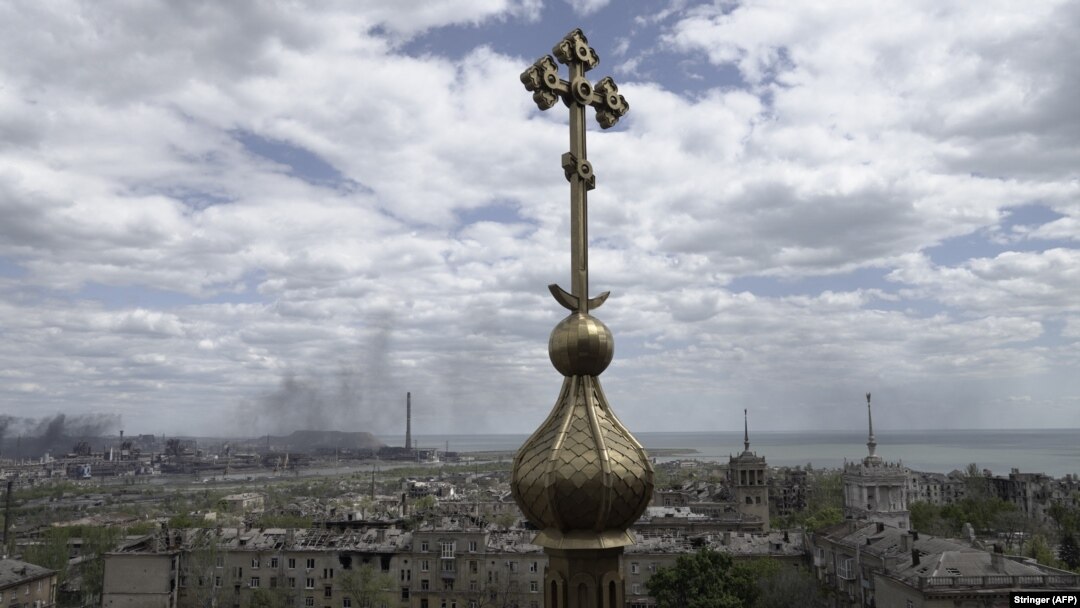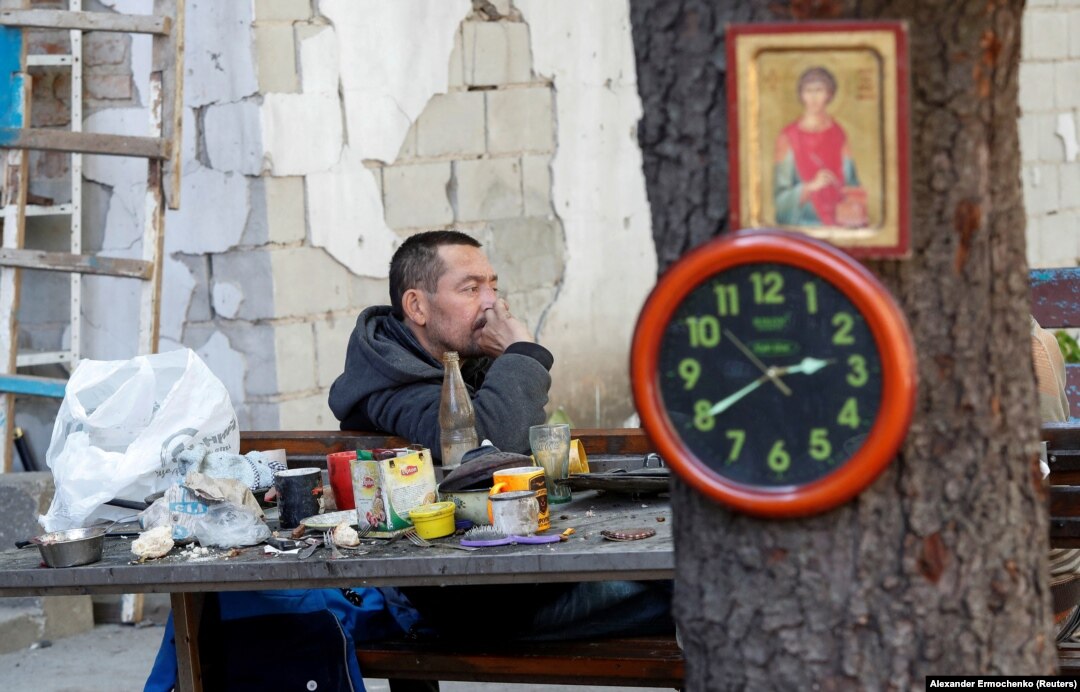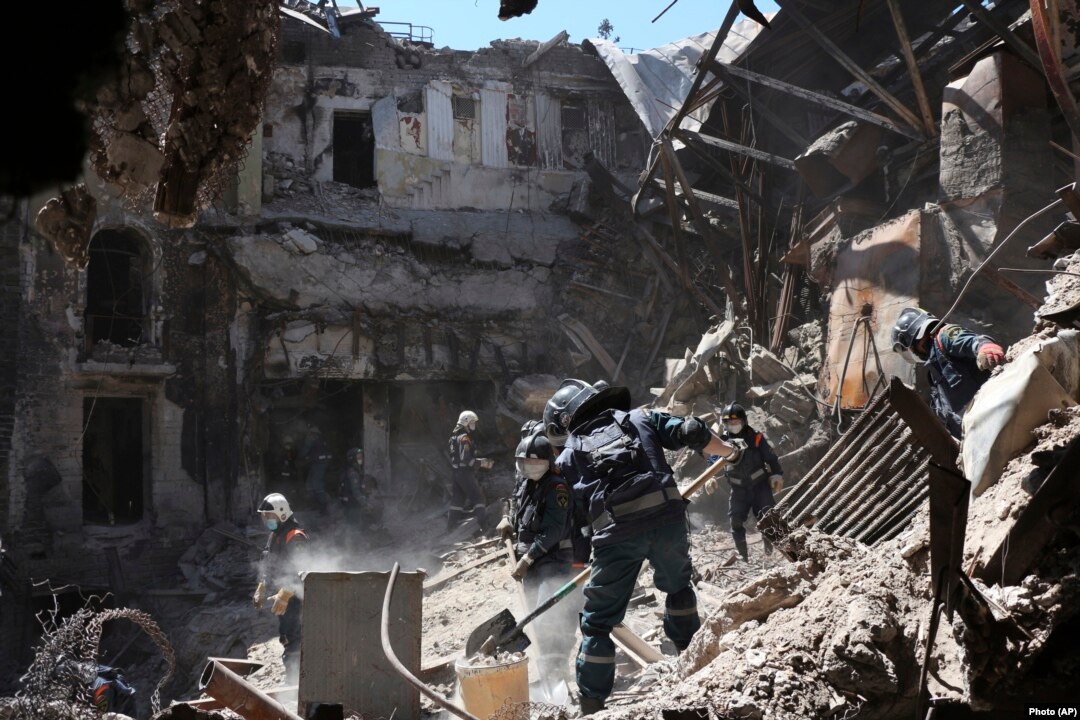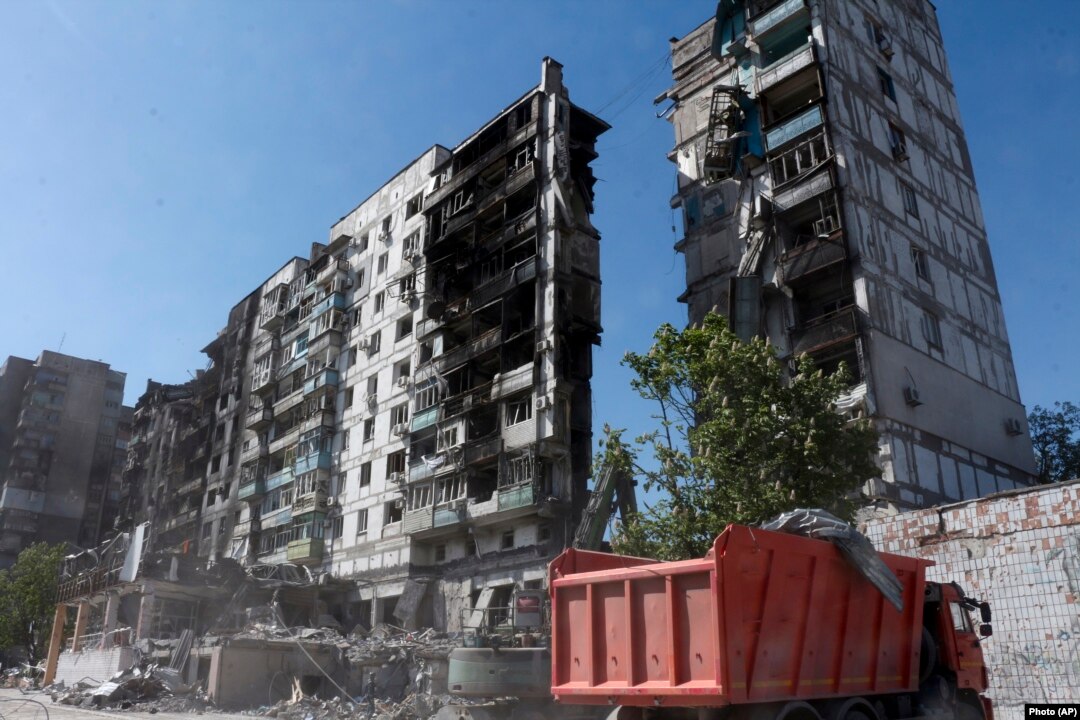Mariupol: Life In The Occupied City of Rubble

A cross from a church is seen against the backdrop of ongoing Russian shelling of the Azovstal steelworks on May 10.

A resident sits in a shattered courtyard on May 12. Ukrainian news site 0629.com.ua reported on May 12 that Russia expected an outbreak in cholera in Mariupol due to the lack of clean water and poor sanitary conditions.

Employees from the local separatist-controlled government clear rubble from the Mariupol theater on May 12. An AP investigation estimated that 600 civilians died when Russia attacked the theater while it was being used as a bomb shelter.

Workers clear rubble from a residential area on May 12.
Workers use a crane to remove a body from a destroyed building on May 12. Thousands of civilians are believed to have died from the Russian onslaught, with many bodies still lying underneath the rubble.
A man sits in an armchair outside a damaged residential building on May 12. After surviving months of shelling, residents must contend with queuing for limited water and food in the occupied city.
Mariupol residents queue for water on May 10.
A local resident cuts firewood outside a damaged residential building on May 12. Under Russian control the city is struggling to restore basic services such as electricity and water.
Local residents gather to charge their mobile phones with a generator provided by the local separatist authorities on May 12.
A couple walk hand in hand through a destroyed residential area on May 12.
Children gather at a playground surrounded by destroyed apartment buildings on March 11.
Civilians fleeing Mariupol wait at a checkpoint on May 7. The International Organization for Migration estimates that at least 7.1 million Ukrainians have been internally displaced since Russia launched its full-scale invasion on February 24.

